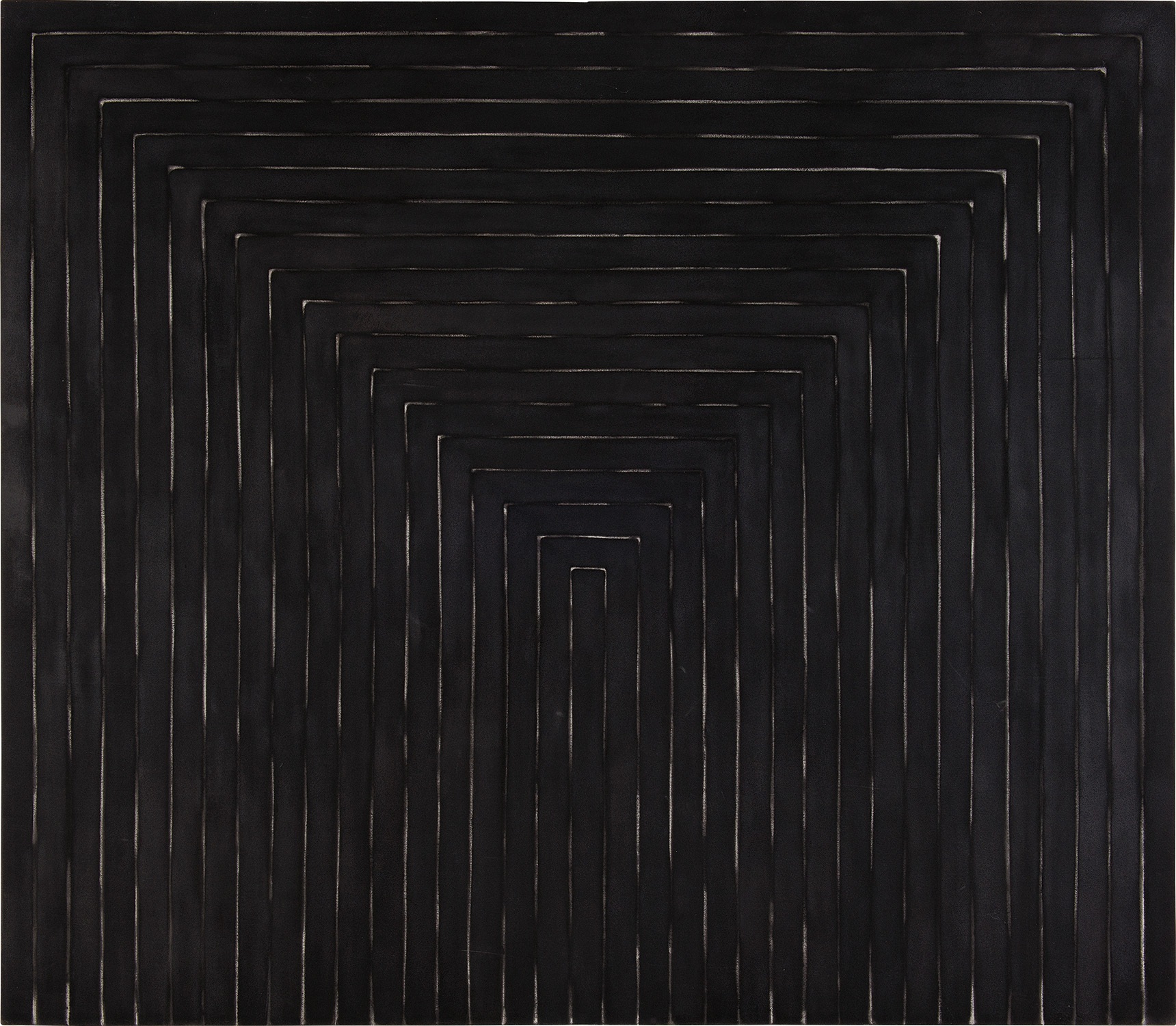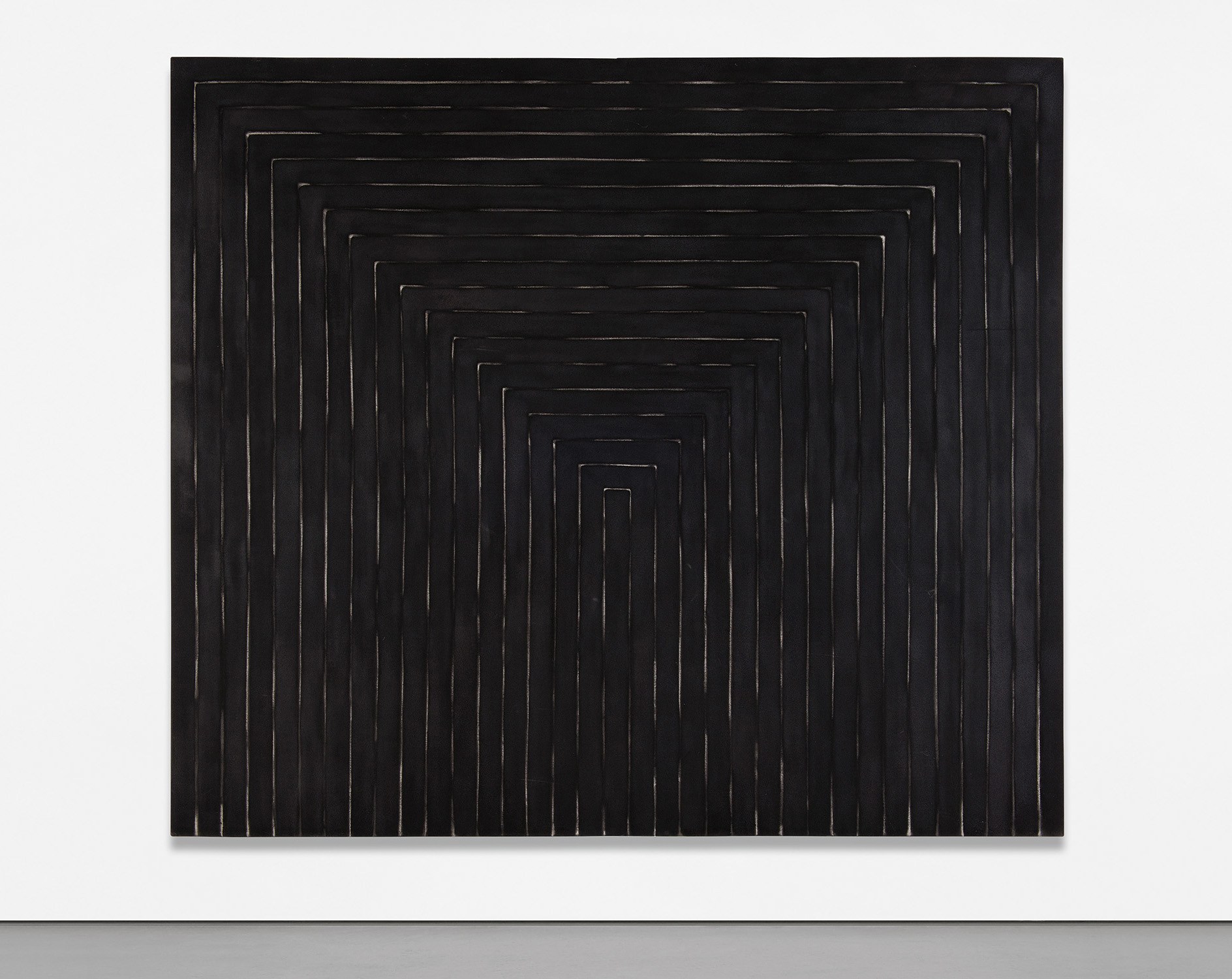



171
Sturtevant
Stella Getty Tomb (First Study)
Full-Cataloguing
Sturtevant appropriated her first Stella paintings in 1964 and 1969, not returning to the minimalist painter’s oeuvre until 1988, the year of the present work. After her first solo show in 1965, where a “repetition” of one of Stella’s concentric square paintings featured prominently, she was met with very mixed reviews. Dealers, artists and collectors mostly rejected her work for the next decade, resulting in Sturtevant’s ten-year hiatus from the art world beginning in 1974. Upon returning to art-making in 1985, Sturtevant looked to works by Pop masters such as Jasper Johns, Andy Warhol and of course, Frank Stella, all of whom she admired for similar ideologies to herself. For Sturtevant, the 1960s represented “the big bang of pop art. But pop only dealt with the surface, I started asking questions about what lay beneath the surface. What is the understructure of art? What is the silent power of art?” (Sturtevant, quoted in conversation with Peter Halley, Index Magazine, 2005, online).
Sturtevant called Stella’s black paintings, such as Getty Tomb, “just incredible.” To recreate Stella’s 1959 painting, Sturtevant made two versions, presumably to perfect the work’s likeness. Without mechanical tools, she hand-painted each white stripe in industrial enamel paint with a thin brush, mirroring Stella’s own process. She worked predominantly from memory, exacting the same brushwork as Stella with skips that left certain areas unpainted. The resulting lines appear to glitter like faintly illuminated lights, achieving the same illusionistic feat as Stella’s masterpiece. Indeed, Stella is credited as the painter who bridged the gap between Abstract Expressionism and Pop art. Like Sturtevant, he questioned the motive behind art-making, the possibilities of painting, and its potential for initiating a discussion.
In 1966, Stella proclaimed of his paintings, “It’s art, or it wants to be art, or it asks to be considered as art, and therefore the terms we have for discussing art are probably good enough” (Frank Stella, quoted in “‘What You See Is What You See’: Donald Judd and Frank Stella on the End of Painting, in 1966”, in ARTnews, July 10, 2015, online). Sturtevant echoed these sentiments, and took the discussion of art a step further with her repetitions like Stella Getty Tomb (First Study). As Richard Phelan aptly described, “Whether she reuses a Target painting by Johns, a Marilyn by Warhol, a Black Painting by Stella, or an assisted readymade by Duchamp, what she seeks is to remove the viewer from the visual to the conceptual. She wants feat and counter feat to produce thought” (Richard Phelan, “The Counter Feats of Elaine Sturtevant”, E-rea, December 15, 2015, online).
Sturtevant
AmericanElaine Sturtevant, known professionally as Sturtevant, was an American artist whose practice considered issues of authorship, authenticity, and the nature of reproduction. Her carefully inexact recreations, referred to as “repetitions,” of the work of her contemporaries attracted almost immediate attention as Sturtevant embarked on this practice in 1964, copying the work of fellow artists and friends like Andy Warhol, Frank Stella, and Roy Lichtenstein. Sturtevant mastered several artforms including painting, sculpture, photography, and film in order to faithfully repeat the work of her contemporaries, continually updating her process in order to keep pace with the changing tides of the avant-garde. Many of the artists Sturtevant repeated, often before they became famous, would later be considered the iconic artists of their respective movements and generations. Her late work is concerned with reproduction and repetition in the digital world.
Sturtevant’s work has attracted simultaneous acclaim and criticism for its close copying of the work of other artists. Her work has been praised as innovative and insightful, and the artist has been the subject of major retrospectives at institutions such as the Museum für Moderne Kunst, Frankfurt, the Serpentine Galleries, London, the Museum of Modern Art, New York, and the Musée d’Art Moderne, Paris. Sturtevant received the Golden Lion at the 2011 Venice Biennale for lifetime achievement. She died in 2014 in Paris, where she had been living and working since the 1990s.